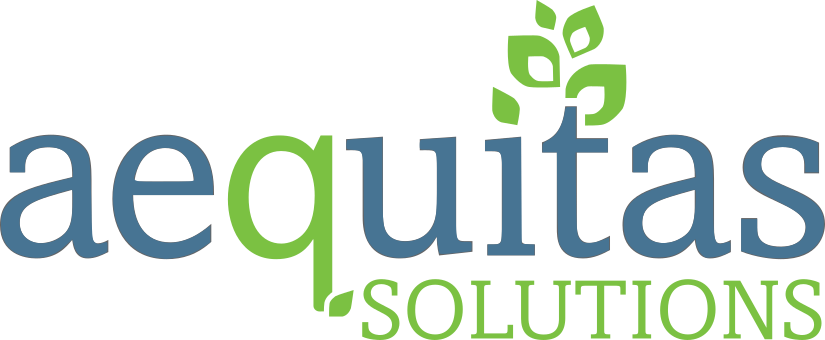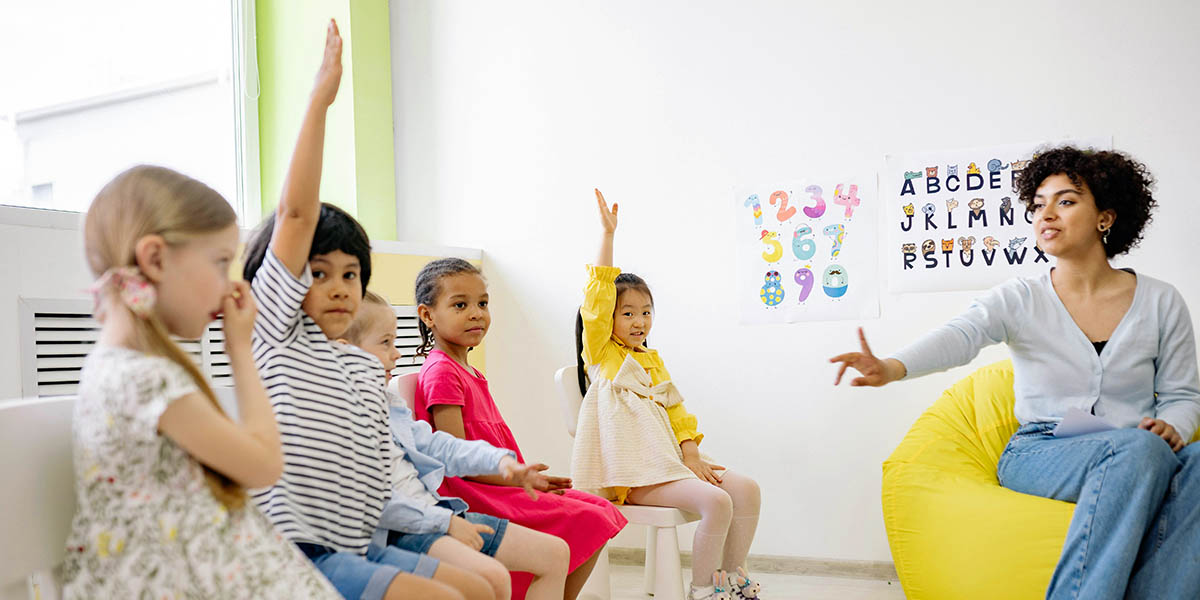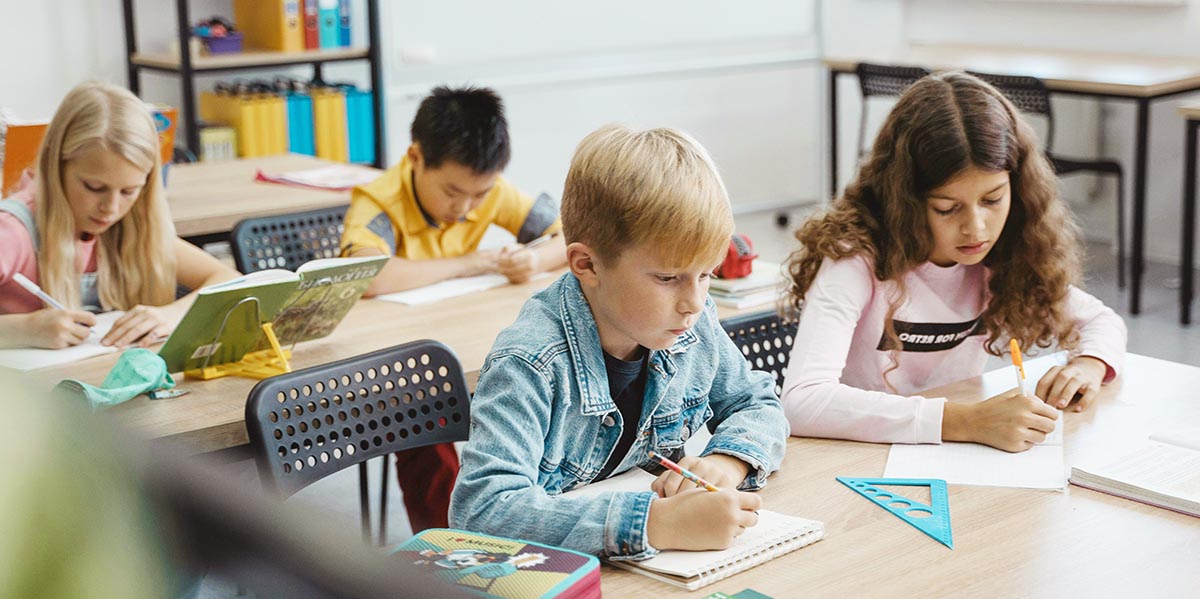The classroom is a vibrant and, at times, chaotic hub of learning, exploration, and student interactions. Educators must overcome the challenge of managing student behavior to create a positive and productive environment where each student can succeed.
Effective behavior management goes beyond simply enforcing rules; it entails crafting a well-rounded plan that fosters positive relationships, establishes clear expectations, and creates consistent routines. This approach to behavior management fosters an environment where every student can learn and achieve success.
In this blog post, we’ll explore seven essential behavior management strategies for educators. When implemented within your school’s Student Information System (SIS), these strategies can significantly enhance classroom dynamics and student outcomes.
1. Create Positive Relationships with Students
Positive relationships with students are crucial for fostering trust and mutual respect, which can significantly impact student behavior. By getting to know your students personally, you can better understand their needs and motivations. Take time to get to know your students – their interests, challenges, and learning styles.
To do this, consider using surveys or questionnaires to gather information about students’ backgrounds, interests, and learning preferences. Your SIS should have a solution that enables you to create and send these questionnaires efficiently. The information gathered will help you connect with each student based on their unique interests and needs. You can also schedule one-on-one meetings or informal lunch sessions to connect with students more personally.
Many SIS platforms provide data on student demographics, learning styles, and academic history. Leveraging this information allows you to tailor your approach to building relationships, catering to each student’s specific needs and interests.
2. Build a Sense of Community
Establishing a sense of community within your classroom can help students feel a sense of belonging and investment. When students feel included and valued, it can improve their social and emotional well-being and bolster their self-confidence.
You can start building a sense of community with the classroom environment. For example, if you are decorating your classroom as part of an instructional program, include your students and incorporate their interests and inputs into the class design. This type of collaborative exercise can create a sense of ownership over the classroom, increasing students’ feelings of belonging.
Group work and team activities are another way to build community and encourage collaboration on projects. Group assignments foster teamwork and build students’ communication skills and a sense of shared responsibility.
3. Establish Clear Rules & Guidelines
Creating structure and clarity is paramount when it comes to creating safe, productive learning environments. Teachers should set clear expectations and rules within their classrooms. Students thrive in environments where boundaries are clearly defined, and they understand the consequences of their actions.
To help with behavior management, establish well-defined rules that cover common scenarios like noise levels, transitioning between activities, and respecting classmates and property. To encourage your students to have ownership over these rules, gather their input, too. Incorporating their ideas on how the class should be governed helps encourage accountability.
Displaying your classroom rules visibly reinforces expectations for students. If possible, have specific rules printed out in areas where the expected behavior should happen. For example, instructions on correctly putting away books or cleaning up games can be posted near their respective storage areas.
You can also share classroom rules through your Student Information System’s parent and student portals to communicate expectations. This helps to get everyone on the same page for what’s expected of students. These clear rules help to mitigate disagreements over what the student did wrong and focus on correcting the behavior for the future.
4. Create a Positive and Engaging Learning Environment
Students actively engaged in learning are less likely to exhibit disruptive behavior. Creating an interactive, positive environment where students feel supported and are encouraged to participate is crucial.
Building a positive learning environment starts by acknowledging and celebrating student achievements, both big and small. This helps to motivate students and reinforce positive behavior. Conversely, mistakes or failures should be acknowledged with empathy and as constructive actions from which learning and growth occur.
For a more creative approach to building an engaging learning environment, you can experiment with incorporating games or student-led activities in your lessons. These innovative teaching methods can make lessons more engaging.
Check to see if your SIS has a data analytics solution that highlights students who are starting to fall behind. By identifying these students early, you can create personalized learning strategies to help support and re-engage them to get them back on track.
5. Set Up Clear Routines
Consistent routines provide structure and predictability, helping students understand what is expected of them and how to navigate classroom procedures. By establishing clear routines, you can minimize disruptions and create a more focused learning environment.
To create routines for your classroom, start by clearly outlining what to do for common tasks, such as asking for help or turning in assignments. You should also provide opportunities for students to practice and master routines and offer praise and reinforcement for following them correctly.
You can utilize your SIS to share classroom routines and expectations with students and parents alike. Equipping students with this knowledge helps set them up for success when they come to the classroom.
6. Implement a Rewards System
Creating a positive reinforcement system with clear goals and rewards helps with behavior management. These goals and rewards can be individual, group, or a combination of both.
For maximum buy-in, gather your students’ opinions on what they’d like to see as a reward. Having their opinions valued and implemented into your reward system can help boost motivation and engagement.
Here are some ideas for rewards that you can use in your classroom:
- Tangible rewards: Stickers, certificates, small toys, or candy are all classic rewards that can be effective for younger students.
- Activities: Extended recess time, choosing a game for indoor recess, or having a movie afternoon are all popular choices.
- Privileges: Allow students to choose their seats, listen to music while they work, or have extra computer time.
- Choices: Offer students a choice of what they want to work on or how they want to complete an assignment.
Managing a rewards system can be made easier with a comprehensive SIS. Your system should help you track student progress towards goals and notify you when they are accomplished.
7. Ensure Consistency
Enforce classroom rules consistently, fairly, and without bias. This builds trust and eliminates confusion about expectations. When students know the expectations and that they will be enforced fairly every time, they are more likely to follow the rules. This creates a safe and predictable learning environment for everyone.
Be fair and consistent in your enforcement communicates that your classroom rules are important. Don’t make exceptions for certain students or for certain behaviors. This will only send the message that the rules can be ignored.
Your SIS can help maintain your consistency by tracking behavior incidents, interventions, and their outcomes. Equipped with both historical and real-time discipline knowledge, teachers can more easily and routinely enforce rules and consequences.
Beyond Behavior Management in the Classroom
Effective behavior management isn’t just about controlling chaos – it’s about creating a learning environment where every student feels empowered to reach their full potential. Classroom technologies, such as a modern SIS, can be a powerful aid in your behavior management toolbox, providing information about your students’ interests and learning styles and helping streamline and personalize instruction, to create a thriving classroom community.
Ready to explore how a modern SIS can revolutionize your classroom? Contact us for a free demo of our enterprise Student Information System, Q.


